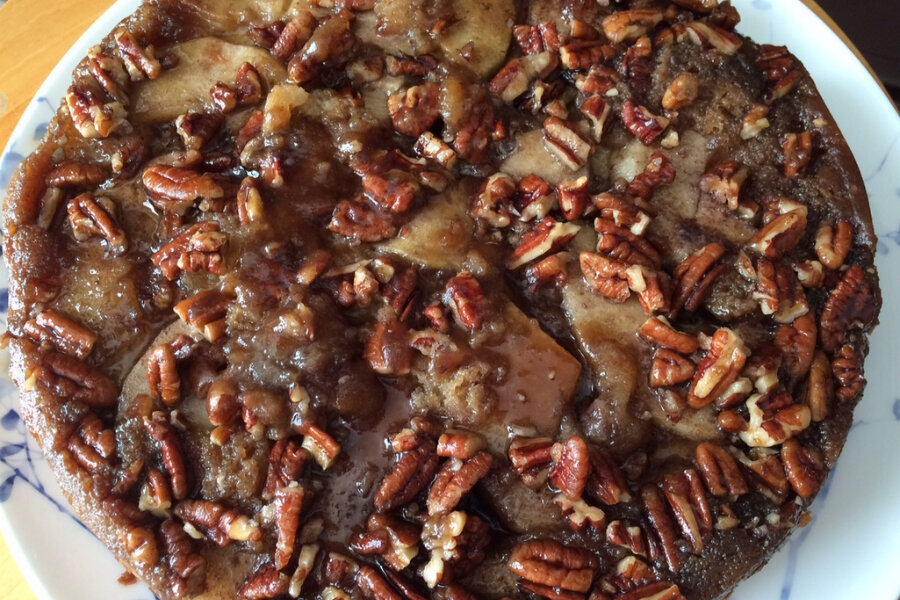By Carol Ramos, The Pastry Chef's Baking
For the filling:
1/2 cup firmly packed light brown sugar
3 tablespoons unsalted butter, cut into pieces
2 tablespoons chopped pecans, toasted
2 large tart-crisp apples, peeled, cored, and thinly sliced
1. Heat oven to 350 degrees F. Grease a 9-inch round cake pan.
2. In a small bowl with a pastry blender, combine the brown sugar and butter until crumbly. Stir in the pecans. Press onto bottom of cake pan.
3. Arrange apple slices atop sugar/butter mixture.
For the cake:
1-1/2 cups unbleached, all-purpose flour
1 teaspoon baking powder
1/2 teaspoon salt
1/2 cup unsalted butter
2/3 cup firmly packed dark brown sugar
1 large egg
1 teaspoon vanilla extract
1/2 cup whole milk
1. In a medium bowl, whisk together the flour, baking powder, and salt.
2. In a large bowl of an electric mixer, beat the brown sugar and butter until light and fluffy. Scrape bowl. Add the egg and vanilla, beating until well combined. Scrape bowl.
3. With mixer on low, alternately add the flour mixture and the milk to the sugar mixture, beating until mixture is combined. Scoop batter into apple-lined pan; quickly and gently spread batter to smooth.
4. Bake for 34 to 46 minutes or until a toothpick inserted in the center comes out clean. Let stand 5 minutes on a wire rack, then run a knife around the inside edge of pan. Invert onto a large platter. Cool 20 minutes. Serve warm. Serves 8-10.
Read the full post on Stir It Up!








